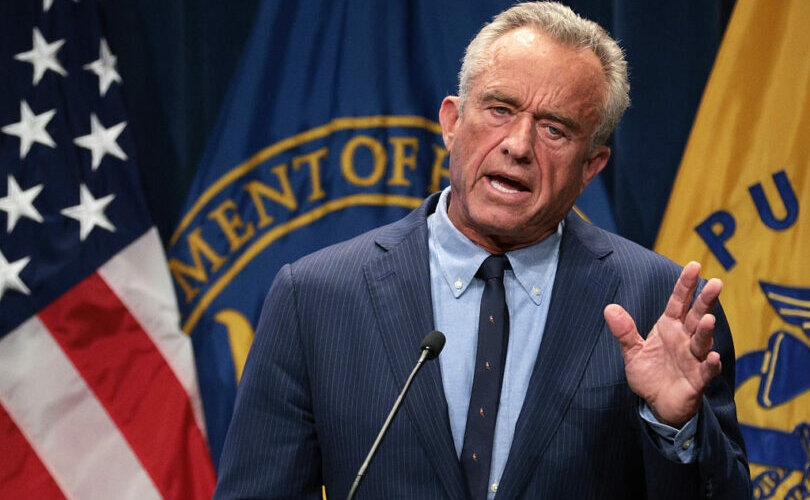MacDonald Laurier Institute
Barriers to care persist but access to MAiD keeps expanding

From the Macdonald Laurier Institute
By Ramona Coelho
Our government has allowed the incredible power of certain lobby groups to control the public discourse and policies around MAiD and its expansion, prioritizing access to MAiD over the safety of Canadians.
My family medicine practice serves predominantly low-income and marginalized patients, including refugees, those who have been in our prison system or are facing charges, and many with disabilities and mental health issues. My patients experience high barriers to care and support and face social isolation and all kinds of discrimination. Observing the impacts of this has left me deeply concerned about our government’s priorities.
When the federal government introduced MAiD (a medical procedure that causes death) to those not at imminent risk of dying, I was appalled to learn that my patients, who are frequently blocked from care as a result of hurdles created by our government and systems, could potentially be offered an expedient death provided by the government.
In 2016, assisted suicide and euthanasia were first legalized in Canada and the term medical assistance in dying (MAiD) was created. Originally MAiD was presented as an exceptional lethal procedure for ending the lives of consenting adults who were experiencing intolerable suffering and were near death. The legislation required that patients meet certain criteria, including having a “grievous and irremediable” medical condition, such as organ failure or cancer, and a “reasonably foreseeable natural death.”
But the Canadian discourse around MAiD rapidly shifted to facilitating access and there has been a broadening of the number and criteria of those who qualify for MAiD. In 2021, Bill C-7 came into effect and removed some of the safeguards within the original pathway, now called Track 1, and created a new, second track, Track 2, for adults with physical disabilities[1] who are not dying. Furthermore, there is a planned expansion, though the timing is currently being debated in Parliament, for patients whose only medical condition is mental illness. Parliamentary recommendations in 2023 included future expansion to children and to incapable adults who signed advance directives for euthanasia.
Currently, those in Track 1 with a “reasonably foreseeable natural death” can potentially have their life ended the same day as the initial request if all the criteria are met and practitioners are available.
For those in Track 2, those not dying, death by lethal injection is set at a minimum of 90 days after the completion of the first MAiD assessment. To qualify for this track, a patient must also have a “grievous and irremediable” condition and experience intolerable psychological or physical suffering. Suffering is treated as purely subjective with no requirement for further validation. There is also no legal requirement for standard treatment options to be accessible or tried, only that a patient be informed that they exist. This means that a patient who says they are suffering intolerably could access MAiD having declined treatments that would remediate their condition. This could be because the treatment is inaccessible, or unaffordable, or if the patient declines therapy.
The Canadian Association of MAiD Assessors and Providers (CAMAP) has received 3.3 million dollars in funding from Health Canada to educate clinicians assessing and providing for those who have requested the service. So although the existing Track 1 and Track 2 pathways have different safeguards, in aiming to allow those near death to have access to MAiD quickly and with no barriers, CAMAP has created a guidance document that suggests clinicians can be flexible as to whether someone fits Track 1’s reasonably foreseeable natural death, since the law does not require that the person be terminally ill or likely to die within 6 or 12 months. It also states that a person may meet the reasonably foreseeable criterion if they’ve demonstrated a clear and serious intent to take steps to “make their natural death happen soon, or to cause their death to be predictable.” This could come about from a refusal to take antibiotics for an infection, stopping oxygen therapy, or refusing to eat and drink.
This means that people with disabilities can state their intention to or make themselves sick enough to qualify as having a reasonably foreseeable natural death, as is currently happening with adults who are not dying and yet are having their lives ended within days of their first MAiD assessment. In one case, a man had a mild stroke and received MAiD shortly after, even though he wasn’t terminally ill. The reason? He was approved for track 1 as he was temporarily eating less. This was due to following a cautious meal plan ordered by the treating team which was intended to prevent choking and aspiration risks.
Currently, some places in Canada have MAiD rates that are the highest in the world. By the end of 2022, there had been almost 45,000 MAiD deaths across Canada since legalization—more than 13,000 of which took place in 2022 with 463 of those individuals accessing MAiD through Track 2. Estimates based on provincial reporting approximate 16,000 deaths in 2023. Health Canada and MAiD expansionists have tried to reassure the public that the overwhelming number of MAiD deaths have been mostly Track 1 deaths (implying they were dying anyway) but we do not know how many of those persons were “fast-tracked” and may have had many decades of life left to live and the potential to recover with time and care.
The CAMAP guidance document that seems to circumvent Track 2 safeguards is just the beginning of many serious problems with MAiD legislation and practice in Canada.
Patient safeguards for MAiD are lacking
Other jurisdictions in the world where MAiD practices are legalized, such as New Zealand and Victoria, Australia, frown on or prohibit raising death as a treatment option. This is due to the power imbalance that exists between physician and patient, coupled with the patients’ assumption that the provider will only suggest the best options for their health. Raising MAiD unsolicited could cause undue pressure to choose death. Yet Health Canada’s 2023 Model Practice Standard for Medical Assistance in Dying recommends that MAiD should be raised to all who might qualify if the practitioner suspects it aligns with a patient’s values and preferences.
The model practice standard’s approach to “conscientious objection” is equally troubling. Health care providers who object to providing MAiD, even in specific cases, are considered conscientious objectors. A physician who is concerned that MAiD is not a patient’s best option is supposed to ignore their conscience or professional opinion and simply refer the patient on so they can seek access to a MAiD death.
This is further echoed in a CAMAP video training session where experts explain that patients might be driven to MAiD by unmet psycho-social needs. The expert leading the session responds to a trainee’s concerns: “If withdrawing is about protecting your conscience, you have [an] absolute right to do so.” But he adds: “You’ll then have to refer the person on to somebody else, who may hopefully fulfill the request in the end.” This demonstrates precisely how effective referrals can funnel patients toward death despite legitimate professional concerns and obligations that should have instead led to the process being stopped or paused.
In response to this legislation, many from the disability community have advocated for safe spaces where MAiD can’t pose a risk to their lives. The Disability Filibuster, a national grassroots disability community, stated in an open letter that its members have raised fears about seeking health care where death could be offered to them and if at their lowest, they might agree.
The disability community is not being alarmist in this concern. Health care providers often rate the quality of life of those with disabilities as poor despite those patients rating their own quality of life as the same as aged-matched healthy individuals. Put differently, many physicians might consider that patients with disabilities are better off dead, consciously or unconsciously, which might lead them to suggest MAiD.
Besides the problems of mandatory referral and raising MAiD unsolicited, there is another important factor to consider. Persons with physical disabilities systemically lack much of the essential care they need to live and consequently suffer higher rates of isolation, poverty, and marginalization, all of which can make death their most accessible option. The Canadian government commissioned a University of Guelph study, published in 2021, in which the researchers noted that some persons with disabilities were encouraged to explore the MAiD option—even though they had not been contemplating doing so—because of a lack of resources that would enable them to live. Those with disabilities can be approved for MAiD based on their disability, but it is their psycho-social suffering that can drive their requests.
The United Nations Special Rapporteur on the rights of persons with disabilities, the Independent Expert on the enjoyment of all human rights by older persons, and the Special Rapporteur on extreme poverty and human rights have all warned the Canadian government that the current MAiD framework could lead to human rights violations. Their concerns are validated by the numerous fact-checked stories about MAiD abuses that are emerging in Canada. These should give us pause. For example, Sathya Dhara Kovac, 44, ended her life through the MAiD program. She lived with a degenerative disease and her condition was worsening, but she wanted to live but lacked the home care resources to do so. “Ultimately it was not a genetic disease that took me out, it was a system,” Kovac wrote in an obituary to loved ones. All Canadians have a right to humane living conditions, to be treated with respect and dignity, and to receive appropriate timely medical care. Considering the living conditions and lack of care that as a society we allow persons with disabilities to have, choices to die might be understandable for those like Sathya. But we should ask ourselves if choices, made under inhumane conditions, are made freely if driven by structural coercion.
Disturbingly, there are MAiD assessors and providers who seem to be ok with proving MAiD under such inhumane conditions. One such provider testified at a parliamentary committee on MAiD that if someone had to wait a long time for a service that would remediate their suffering, she would still consider that waiting to be irremediable suffering and grant them MAiD in the interim. Therefore, it is not surprising that patients with unaddressed psycho-social suffering are being given MAiD by assessors like her.
When it was considering Bill C-7, the federal government asked the Parliamentary Budget Officer to estimate cost savings to our health care system of the legalization of MAiD. The office did this by looking at the comparative cost savings of MAiD versus palliative care at the end of life. Through this impoverished lens of valuation, it is clear that the cost savings will be even greater when, by many years, we prematurely end the lives of people who have higher care needs, especially when we factor in social services, disability benefits, equipment, and other costs on top of the direct savings to health care budgets. But this is not how we should create budgets or measure outcomes. Our socialized health care system is meant to serve those with disabilities, not consider them a cost to the system.
The Canadian government is currently deciding on the timing for its further roll-out of MAiD, this time for mental illness and with no legislative changes to the current safeguards. This expansion is alarming given what we know is happening already to disabled Canadians under the existing MAiD regime. The Canadian Association of Chairs of Psychiatry wrote a letter in 2022—and some testified more recently in Parliament—that we are not ready for this development. They have warned that there is no evidence to guide decisions about who with mental illness would not get better. The evidence suggests that for every 5 people whose lives would be ended based on the sole medical condition of mental illness, 2 or 3 would have recovered. We expect to have much higher numbers qualifying for MAiD on the grounds of mental illness in Canada than in other jurisdictions that allow assisted death for this reason, since barriers to care and unmitigated psycho-social suffering do not have to be rectified in this country (as they do elsewhere) before being granted MAiD.
Our government has allowed the incredible power and influence of certain lobby groups and their members to control the public discourse and policies around MAiD and its expansion, prioritizing access to MAiD over the safety of Canadians. Besides the current discussion about when to legalize MAiD for mental illness, the parliamentary committee has also recommended expansion to children and MAiD by advance directives. With eligibility for MAiD continuing to broaden, we are not giving priority to serving those most in need, but instead seem intent on rapidly expanding a path to end their lives.
[1] Disabilities is an umbrella term that includes impairment, chronic illness and/or other conditions.
Dr. Ramona Coelho is a family physician in London, Ontario. Her practice largely serves marginalized patients.
Immigration
Mass immigration can cause enormous shifts in local culture, national identity, and community cohesion

By Geoff Russ for Inside Policy
It matters where immigrants come from, why they choose Canada, and how many are arriving from any single country. When it comes to countries of origin, immigration streams into Canada have become wildly unbalanced over the last decade.
Few topics have animated Canadians more than immigration in the past year.
There is broad consensus among the public that the annual intake of newcomers must fall, and polling shows both native-born and immigrant citizens agree on this. In Ottawa, the Conservative opposition has called for lower numbers, and the Liberal government ostensibly concurs.
While much of the discussion surrounding immigration has focused on economic factors like affordability and the shrinking housing supply, less attention has been paid to the cultural and political changes of welcoming more than 5 million people into the country since 2014.
Specifically, attention must be paid to the possible outcomes of importing hundreds of thousands of people from regions embroiled by war or prone to conflict. This is a necessity as digital technology proliferates and guarantees the world will be interconnected, but not united.
Mass immigration brings in far more than just people. It can cause enormous shifts in local culture, national identity, political allegiances, and community cohesion.
It matters where immigrants come from, why they choose Canada, and how many are arriving from any single country. When it comes to countries of origin, immigration streams into Canada have become wildly unbalanced over the last decade.
In 2023, almost 140,000 people immigrated to Canada from India, while the second-largest intake came from China, with 31,770 people.
This new trend is at odds with Canada’s historical immigration policies, which were more evenly weighted by country. In 2010, the top three national pools of immigration were the Philippines at 38,300 newcomers, India with 33,500, and China with 31,800.
Other countries that Canada has received increasing numbers of migrants from includes Syria, Pakistan, and Nigeria.
Past federal governments took consideration for details like economic needs and capacity for integration. Canadian immigration policy in 2025 should take into account modern communications and conflicts within certain regions as well.
21st century technology continues to advance and innovate at dizzying speeds, giving rise to immersive social platforms and instant messaging platforms like WhatsApp or Signal. This has brought the world closer together, but rather than promoting peace and understanding, it has amplified foreign conflicts and brought them to our own backyards.
Tens of thousands of migrants from the Levant have arrived since 2015, a region where anti-Zionism is deeply ingrained in the cultures, as well as full-blown antisemitism.
Since the outbreak of the Israel-Hamas War in 2023, the entire West has borne witness to antisemitic violence in Europe and North America, often perpetrated by ideologically motivated migrants.
Earlier this year, a Syrian migrant in Germany went on a stabbing spree with the intent of murdering Jews, while last September, Canadian police foiled the plot of a Pakistani man in Ontario who had planned to commit a mass killing of Jews in New York City.
Canada’s political culture has been profoundly affected by these same waves, with demographic changes forcing the federal government to alter its longstanding foreign policy positions. For example, the newly-minted Minister of Industry Mélanie Joly allegedly remarked last year that her shifting stance on the Israel-Hamas war was due to the “demographics” of her Montreal riding.
Montreal itself has become a hotbed of anti-Israeli and anti-semitic violence. Riots, property damage, and the storming of the McGill University campus have been carried out by radicals inspired by Hamas and their allies.
In 1968, the great Canadian thinker Marshall McLuhan co-authored War and Peace in the Global Village, which warned of the consequences of modern technologies erasing the boundaries of the world. McLuhan explicitly cautioned that technology would make the world smaller, and lead to conflict in his theorized global village.
Today, that village is one where Jewish students are routinely harassed on college campuses in Vancouver and Toronto, while synagogues are burnt to the ground in Melbourne. It does not matter whether the victims are Israeli or not. They are seen by their assailants as legitimate targets as part of an enemy tribe.
On May 21, two staffers at the Israeli embassy in Washington DC were shot dead by a man shouting pro-Palestinian slogans.
These sorts of imported feuds go beyond the Middle East. Global tensions in regions like the Indian subcontinent present another threat of foreign-inspired and funded violence, as well as undue political shifts.
India and Pakistan are locked in a long running standoff over the disputed territory of Kashmir.
Last month, several tourists were murdered in Kashmir by militants that India accused Pakistan of backing, leading to several low-level exchanges between the Indian and Pakistani militaries before a ceasefire was brokered. Tensions are far from dissipated, and the possibility of a full-scale confrontation between India and Pakistan remains high.
Considering those two rivals have massive diasporas in the West, a potential war on the subcontinent could radically change domestic politics in countries in Canada, Australia, and Britain.
In 2022, violent clashes broke out between Hindu and Muslim youths in the British city of Leicester following a cricket match between India and Pakistan. The street battles lasted for weeks, and threatened to restart later that year following an escalation in India and Pakistan’s clash over Kashmir. In London, demonstrators from the Pakistani and Indian communities came close to violence.
If a sporting rivalry can inspire hooliganism, a war will spark something far worse, and the globalization of the Israel-Gaza conflict is a glimpse into what that might look like.
There is historical precedent in Canada for how overseas conflicts affect domestic politics.
During the 19th century, hundreds of thousands of Irish—both Catholic and Protestant—emigrated to Canada before and after Confederation in 1867. They brought their religious feuds with them.
The militantly anti-Catholic Orange Order, run by Protestants, became one of the most powerful political forces in Ontario. They held a virtual monopoly on municipal politics in Toronto, excluded Catholics from jobs in the public service, and took part in brawls with the city’s Irish Catholic community for more than 100 years.
Thomas D’Arcy McGee, one of the Fathers of Confederation and an Irish Catholic migrant, was murdered for speaking out against the republican Fenian Brotherhood, which had infiltrated politics both in Canada and the United States.
Integration throughout successive generations mitigates and even practically eliminates the impact of imported conflicts. This was the case with the Irish sectarian divide, though it took over a century to fade away.
Worth noting is that roughly 300,000 Ukrainian refugees currently reside in Canada, having been admitted under a special visa program following the Russian invasion in 2022. It is intended to be temporary, with the expectation of repatriation once a stable peace returns to Ukraine.
Similarly to Irish-Canadians, the vast majority of the established Ukrainian-Canadian community has its roots in pre-modern Canada, and is largely well-integrated into the country’s social fabric. To date, there has been no major violence or anti-social harms inflicted upon their Russian-Canadian counterparts despite the war, or vice-versa.
Furthermore, the Canadian government has a longstanding close relationship with Kyiv, and there is far more trust and transparency regarding intent and collaboration. This is not the case with governments like China and India, the former of whom actively interferes in our elections, and the latter of which has been accused of assassinating dissidents on Canadian soil.
The existence of the iPhone, the internet, and opportunistic foreign governments makes it incredibly dangerous to not change course. That is not to imply that the average migrant is an active foreign agent. But the sheer quantity makes vetting them all a challenge.
Mitigating these threats requires strategic planning when crafting immigration policy.
Other parts of the world like Southeast Asia, Southern Europe, and Latin America are relatively stable and peaceful and are potential sources of newcomers with far lower risk of foreign interference and diasporic violence.
At-play is the stability, unity, and integrity of our political system. Canadian politics must remain fully Canadian in its focus and priorities. That cannot happen if we sleepwalk into becoming a battleground for the rest of the world.
Geoff Russ is a writer and policy analyst, and a contributor for the Macdonald-Laurier Institute.
Health
Medical organizations and media let Canadians believe gender medicine is safe and universally accepted. It’s not

 The Macdonald Laurier Institute
The Macdonald Laurier Institute
14 physicians sign statement for Inside Policy
Many Canadians are likely unaware that several other medically advanced countries—like Britain and multiple EU member states—have restricted hormone therapies and surgical interventions which have documented harms and no clear benefits, writes a group of Canadian doctors.
Following similar actions by peer countries around the world, United States President Donald Trump signed a Jan. 28 executive order declaring his administration will not “fund, sponsor, promote, assist, or support” so-called “gender-affirming” medical treatment for minors—which prescribes hormone therapies and surgical interventions that change sex-determined physical characteristics. Now, a recent report from the U.S. Department of Health and Human Services confirms what many other medical bodies and advanced countries have already recognized: the science and reasoning behind this form of medicine is deeply flawed.
This news appears shocking to many ordinary Canadians, as well as legacy media outlets like The Globe and Mail. That’s largely because Canadian medical organizations and governing bodies—presumed by the public to speak for physicians—have vocally supported “affirmation”: an approach that unquestioningly supports the choice of patients to undergo these treatments. This has left the public with the false impression that such treatments are safe, effective, and universally accepted by physicians. We, a group of 14 Canadian physicians, feel it is vital for the public to know that many—and perhaps most—physicians believe there must be restrictions on gender therapies that permanently change a minor’s body.
Many Canadians are likely unaware that similar restrictive policies are already in place in other medically advanced countries, like Britain and several EU member states.
Most notably, the U.K. government commissioned Dr. Hilary Cass to produce what has become known as the Cass Report, a thorough review of the literature around the treatment for gender dysphoria. Cass investigated whether there is actually proof that these therapies “save lives,” as many activists will insist, or if there is evidence that such interventions make patients’ lives better? Dr. Cass concluded that although medical treatments for gender dysphoria can cause significant harm (as is the case with any medical intervention), there is no conclusive proof of benefit. Hormone therapy and surgeries can lead to chronic pain, incontinence, sterility, and more. They are permanent and irreversible. Therefore, Britain and many other countries restrict most of these treatments for minors.
Here in Canada, Alberta has been the leader in following the evidence. In 2024, the province introduced legislation mandating a minimum age before children could consent to make these permanent, life-altering changes to their bodies. Many physicians were involved with drafting the well-considered legislation. Many more applauded it—some publicly, others quietly.
Despite that, the usual suspects leapt forward to pillory Premier Danielle Smith’s government. The CBC, Globe and Mail, and other legacy media outlets ran headlines like: “Medical experts warn Danielle Smith’s restrictions on gender affirming care will harm vulnerable youth in Alberta.” Most articles quoted bodies such as the Alberta Medical Association (AMA), Canadian Pediatric Society (CPS), and the venerable Canadian Medical Association (CMA), all of which very quickly released statements decrying Alberta’s stance. Such articles give the public the impression that these organizations speak for physicians, expressing a majority, if not unanimous, view.
These organizations do not speak for all physicians. It is hard to know what percentage of physicians oppose “gender-affirming care” for minors because many are afraid to speak their minds in a climate where any dissent is couched as “transphobia.” Physicians who speak out have been subject to investigations and penalties by regulatory organizations, particularly after the passing of federal Bill C-4 in 2022, which potentially makes it a criminal offence to refuse support of a child’s belief that he or she is transgender.
In 2025, one needs to take statements from physicians’ groups with a grain of salt.
Engagement with the CMA is in decline. In 2018 (when membership remained mandatory for doctors in many provinces), the association claimed 87,000 members. By 2024, membership dropped to 75,000 despite an increase in the number of physicians in Canada. Many are members only in a nominal sense, and have little meaningful involvement with the CMA. Rather than taking the pulse of the medical profession as a whole, seeking diverse viewpoints, and making statements that represent this range of views, the CMA is captured and directed by a radical progressive fringe. Unfortunately, this fringe retains the historical imprimatur of being the “voice of physicians” in Canada.
The same phenomenon has occurred with provincial physicians’ organizations like the AMA, which collect mandatory dues but seek minimal engagement from members. Activists have exploited this vacuum to take the helm of these organizations.
This same phenomenon can be seen in organizations like the CPS, CMA, and similar specialty bodies. Their mission statements and missives increasingly read like Marxist screeds rather than wise and measured comment. Just one such example is the CMA’s “ReconciliACTION Plan,” which “challenges anti-Indigenous structures in the health care system.” When physicians with more conservative and scientifically-based views attempt to engage these groups, they have often been met with indifference or hostility, and are systematically prevented from holding positions within these organizations.
This shows that these organizations do not speak for all physicians. When mainstream media rely on such organizations as their sole source for “expert” comment, they miss the real story and avoid engaging with facts. Legacy media portrays this as a battle between science-denying right-wing bigots on one side, and empathetic experts on the other. This could not be further from the truth.
The science is not “settled” by any means. So-called “gender-affirming care” has proven risks and harms, but unproven benefits. It is not “life-saving,” but it is permanently life-altering. We are 14 of the many physicians who strongly believe that minors should not be allowed to make such decisions. The self-proclaimed “experts” do not speak for us.
Written and signed by,
Dr. Arney Lange MSc, MD, FRCPC
Dr. Brent McGrath, MD, FRCPC
Dr. Chris Millburn MD
Dr. David Zitner MD
Dr. Dion Davidson MD, FRCSC, FACS
Dr. Duncan Veasey MD
Dr. Julie Curwin MD FRCPC
Dr. Lori Regenstreif MD, CCFP (AM), FCFP
Dr. Mark D’Souza MD, CCFP (EM), FCFP
Dr. Martha Fulford MD, FRCPC
Dr. M.J. Ackermann MD
Dr. Richard Gibson MD, FCFP
Dr. Roy Eappen MDCM, FRCP (C)
Dr. Shawn Whatley MD, FCFP (EM)
This statement is an initiative of the Macdonald-Laurier Institute, written and signed by concerned physicians from across Canada who are calling for a more careful, evidence-based, and ethically responsible approach to the treatment of gender issues.
-

 Crime2 days ago
Crime2 days agoHow Chinese State-Linked Networks Replaced the Medellín Model with Global Logistics and Political Protection
-

 Addictions2 days ago
Addictions2 days agoNew RCMP program steering opioid addicted towards treatment and recovery
-

 Aristotle Foundation2 days ago
Aristotle Foundation2 days agoWe need an immigration policy that will serve all Canadians
-

 Business2 days ago
Business2 days agoNatural gas pipeline ownership spreads across 36 First Nations in B.C.
-

 Business16 hours ago
Business16 hours agoEU investigates major pornographic site over failure to protect children
-

 Courageous Discourse1 day ago
Courageous Discourse1 day agoHealthcare Blockbuster – RFK Jr removes all 17 members of CDC Vaccine Advisory Panel!
-

 Health1 day ago
Health1 day agoRFK Jr. purges CDC vaccine panel, citing decades of ‘skewed science’
-

 Censorship Industrial Complex1 day ago
Censorship Industrial Complex1 day agoConservatives slam Liberal bill to allow police to search through Canadians’ mail



